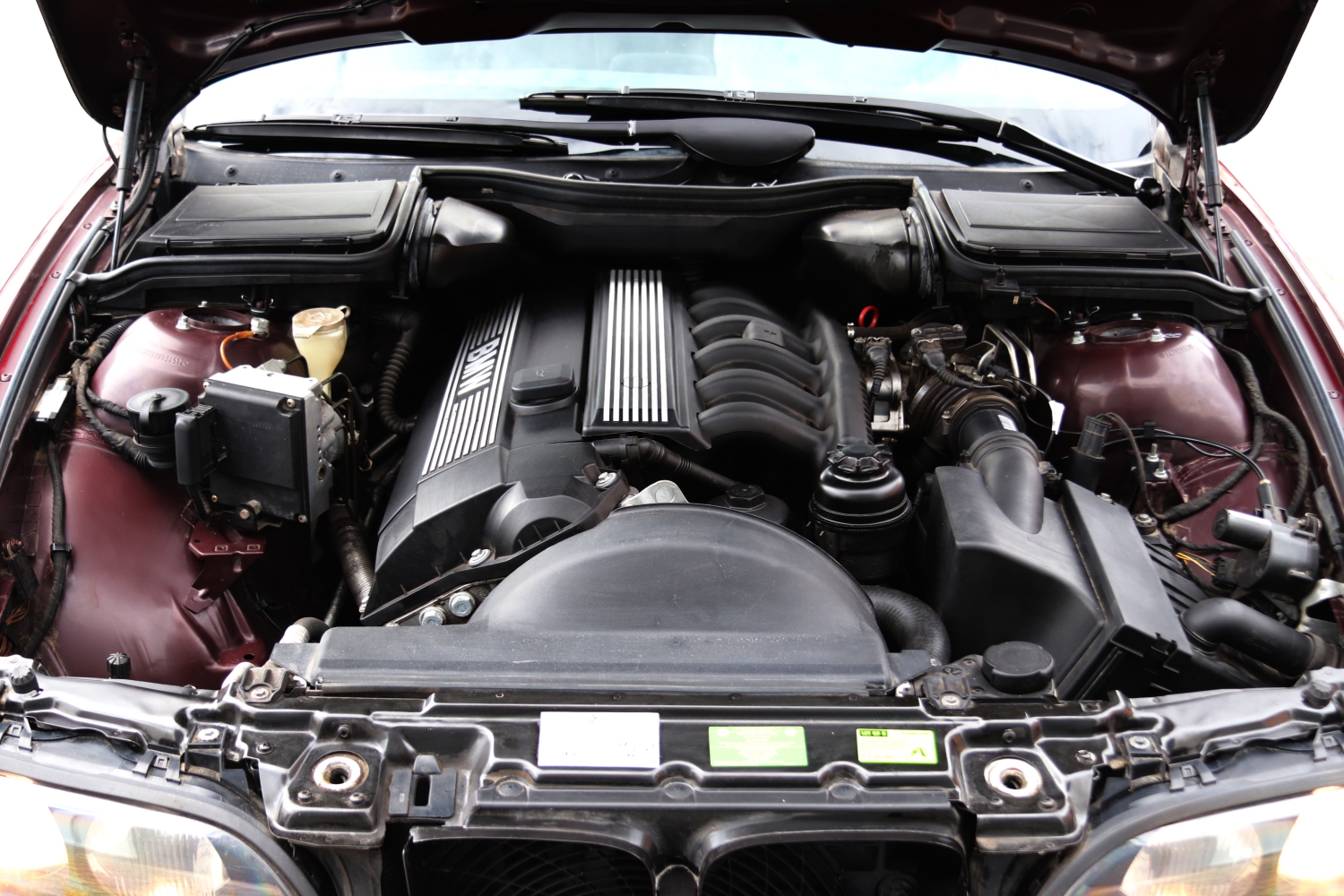The E39 520i

Engine
The BMW E39 520i was powered by the M52B20 (pre-facelift) and later the M54B22 (facelift) engines, both part of BMW's renowned inline-six (I6) engine family. The M52B20, a 2.0-liter unit, featured an aluminum block with Nikasil-coated cylinder liners (later replaced with steel liners) and BMW's VANOS variable valve timing system, offering a smooth power delivery and refined performance.
With the facelift in 2000, the M54B22 replaced the older M52, increasing displacement to 2.2 liters while improving torque and efficiency. The M54 engine introduced electronic throttle control and a redesigned intake system, further enhancing responsiveness and fuel economy.
While not the most powerful engine in the E39 lineup, the 520i was appreciated for its balance, reliability, and smooth-revving nature, making it a solid choice for those who valued efficiency and classic BMW driving dynamics over outright speed. Enthusiasts often praise its durability and ease of maintenance, though performance modifications are more limited compared to larger displacement E39 variants.
Performance
The BMW E39 520i was the entry-level six-cylinder model in the lineup, offering a blend of refinement, reliability, and adequate performance for everyday driving. Depending on the engine variant, power output varied slightly between the M52B20 (pre-facelift) and M54B22 (facelift) versions.
The M52B20, a 2.0-liter inline-six, produced 150 hp (110 kW) at 5,900 rpm and 190 Nm (140 lb-ft) at 3,500 rpm. While not the most powerful engine in the E39 range, it delivered a smooth and linear powerband, characteristic of BMW's naturally aspirated inline-six engines.
With the facelift, the M54B22 increased displacement to 2.2 liters, boosting power to 170 hp (125 kW) at 6,100 rpm and torque to 210 Nm (155 lb-ft) at 3,500 rpm. This provided a modest but noticeable improvement in responsiveness and mid-range pull, making it a more enjoyable engine for both city driving and highway cruising.
Specs:
Pre-Facelift (M52B20, 2.0L I6)
- Power Output: 150 hp (110 kW) @ 5,900 rpm
- Torque: 190 Nm (140 lb-ft) @ 3,500 rpm
- 0-100 km/h (0-62 mph) Acceleration: ~10.2 seconds (manual)
- Top Speed: ~218 km/h (135 mph)
Facelift (M54B22, 2.2L I6)
- Power Output: 170 hp (125 kW) @ 6,100 rpm
- Torque: 210 Nm (155 lb-ft) @ 3,500 rpm
- 0-100 km/h (0-62 mph) Acceleration: ~9.0 seconds (manual)
- Top Speed: ~225 km/h (140 mph)
520i Sound
520i Acceleration
Fuel Consumption
Pre-Facelift (M52B20, 2.0L I6)
- Combined: ~9.0–9.5 liters per 100 km (25–26 mpg)
- Urban: ~12.0–13.0 liters per 100 km (18–20 mpg)
- Extra-Urban: ~7.0–7.5 liters per 100 km (31–34 mpg)
- Fuel Tank Capacity: 70 liters (18.5 gallons)
Facelift (M54B22, 2.2L I6)
- Combined: ~8.5–9.0 liters per 100 km (26–28 mpg)
- Urban: ~11.5–12.5 liters per 100 km (19–21 mpg)
- Extra-Urban: ~6.5–7.5 liters per 100 km (31–36 mpg)
- Fuel Tank Capacity: 70 liters (18.5 gallons)
Reliability
The M52B20 is particularly known for its durability and simplicity, with fewer electronic components compared to later BMW engines. However, early versions with Nikasil cylinder liners were prone to wear when exposed to high-sulfur fuel, though this is no longer a major concern.
The M54B22, while an improvement in power and efficiency, introduced a few common issues such as oil consumption, cooling system weaknesses, and DISA valve failures. Despite these, it remains a reliable and long-lasting engine when maintained correctly.
